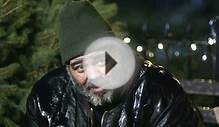
Fall, Winter
By Ken Bezilla, Southern Exposure Seed Exchange
(views present at the time of July 2009!)
Note: that is centered on developing crops in zone 6b (normal cold weather reasonable ~0 levels F, reduced of -5 degrees F one year in ten) within central Virginia. Initially fall frost ~10/15. Hefty winter months temperatures maybe not throwing in until late Dec/early January (hefty cold temperatures = daytime conditions not receiving above freezing, evenings below 10 degrees). Last springtime frost ~4/15.
Vegetables that pass away with 32 levels F frost: basil, beans, corn, cucumbers, eggplants, melons, okra, peanuts, peppers, potato tops (potatoes can handle significantly lower conditions), squash, sweet potatoes, tomatillos, tomatoes.
At near-freezing conditions, operate sprinklers through the night maintain frost-tender plants (ones too-large to pay for easily) alive for two extra days of manufacturing. If at all possible, whenever growing, group tall plants like okra and tomatoes near collectively for working sprinkler.
Persephone dates: whenever times are too brief (significantly less than 10 hours) for development to happen. Relies on latitude - in main Virginia, ~Nov 20-Jan 20 - but because cold temperatures doesn't truly start working until mid-December, and then the ground remains cold a lengthy while, the efficient times here are more like Dec 15-Feb 15. During mild winters, some development may nevertheless take place also over these short days, during cold but bright climate, crops in greenhouses, coldframes, and under row covers will continue to grow.
Watering: in warm weather, it could be difficult to germinate some seed. Ideal should be to plant right before a rain storm, or plant at night and give the soil a beneficial soaking. Liquid soil lightly every single day until seeds emerge. Drip irrigation is extremely ideal for fussy plants like carrots.
Some seeds like cilantro and lettuce have actually difficulty germinating in summer, but will grow fine after they've germinated. Helpful strategy: chill seed first, plant in evening, drench soil with cold-water, and hold earth covered with burlap or panels until seeds emerge (3+ days for lettuce, 5+ times for cilantro). Remove burlap or panels quickly, usually grasshoppers may lurk underneath and consume the seedlings!
Some seeds like spinach and beets will germinate in summer, but the seedlings will wilt when you look at the heat and die off within 1-2 days; for those, need to wait until September for trustworthy survival.
Fertilizing/healthier flowers: in late summer/fall, avoid fertilizer or compost which is full of nitrogen - plants are more cold-hardy if they develop more slowly. The healthier the earth, the greater amount of cold-hardy the flowers. (The greater vitamins dissolved in sap = the reduced the freezing point regarding the plants, as well as the sweeter the plants will taste!) For extra security, squirt flowers with kelp liquid (2 tbsps kelp solution/1 gallon liquid) before frosts to improve plant hardiness.
Raised Beds: to avoid origins from rotting in cold, wet soil, plant into elevated beds.
Row address: standard row cover typically provides about 4 quantities of frost security per level through the night. (2 layers = 8 degrees, 3 levels = 12 levels, etc.) line address will heat plants an additional 10 degrees during sunny days, considerably assisting with growth. Row cover help keeps plants warm through the night, however if temperatures don't get above freezing in the day, some flowers will eventually get too cool and die.
Row address can sleep on flowers, but guidelines of greens might damaged during hard frosts where they touch row cover. Use bamboo or wire hoops (#9 measure line) to raise line address, with hoops 4-6' apart.
Put row cover on plants before frost begins - line cover freezes to surface, material, and itself, and it will rip easily and stay difficult to unfold without harming it whether it's currently frozen.
Line address lasts 2-4 many years if saved dry and out of sunlight when not used. Holes may be patched with duct tape. To help keep row address from blowing off, make use of surface staples (U-shaped material, ~1" x 6"), or heavy sticks, or bury the sides for the row cover. (Buried line cover should be unearthed monthly maintain weeds' origins from developing through it.)
Snow helps insulate plants from cold. However, if there's lots of snow (4" or more) the snow can smush huge greens (6" tall or maybe more) that are under row cover. Therefore safer to just take row cover off flowers if really hefty snowfall is predicted and allow the snowfall insulate the plants.
Cool structures: advantages = greens will not get broken by snow, is hotter than line cover, plants fare better out of wind. Drawbacks: can be physically embarrassing to grow in and weed; may have more difficulties with critters (voles, mice, etc.); be careful if using glass - synthetic is easier/safer to take care of.
RELATED VIDEO



Share this Post
Related posts
Winter Style
WinterStyle.com specializes in premium quality winter months outerwear accessories. Discover the seasons hottest winter months…
Read MoreNew Spring Dresses
Place some spring inside action with trendy springtime outfits from Banana Republic. Get the Spring s Hottest Styles Find…
Read More










